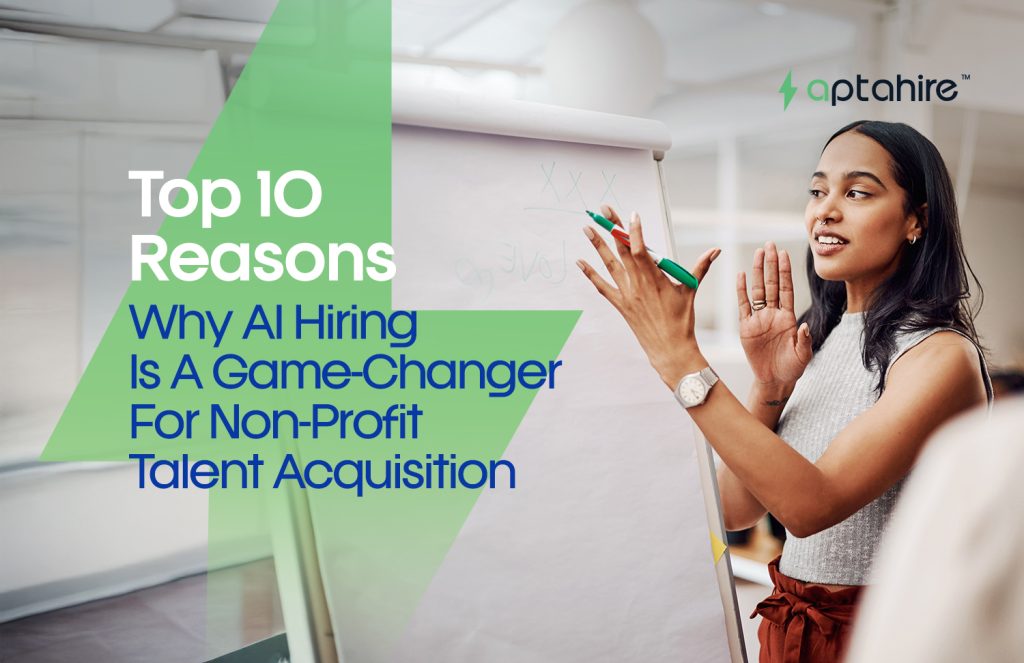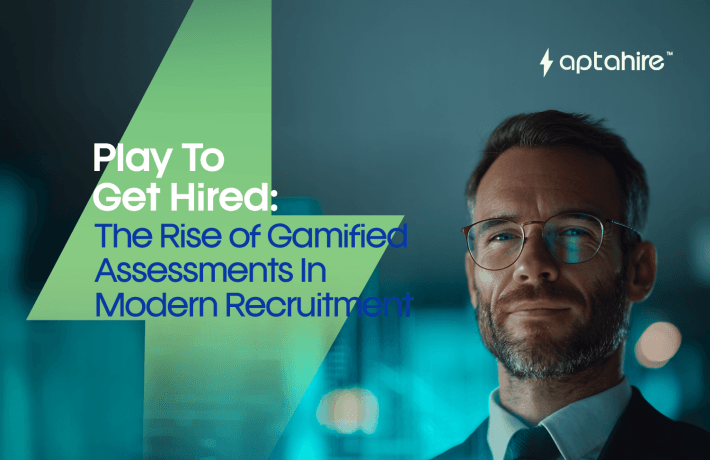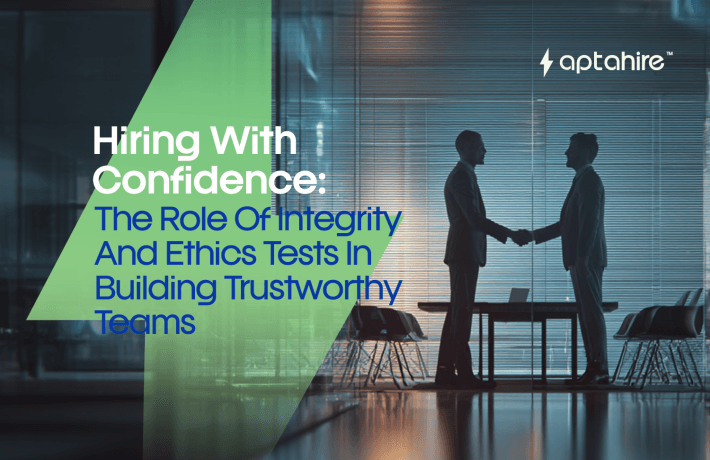Top 10 Reasons Why AI Hiring is a Game-Changer for Non-Profit Talent Acquisition

Introduction
Hiring the right people has always been a big deal for non-profit organizations. Every role, whether it’s frontline staff, fundraising managers, program strategists, or digital campaigners, can directly impact your mission. But here’s the thing, non-profits often have to do more with less. Limited budgets, tight timelines, and the need for value-driven hires make traditional hiring methods time-consuming and sometimes ineffective. This is where artificial intelligence is stepping in and completely changing the game.
AI isn’t just a tech buzzword anymore. It’s becoming a powerful ally for non-profits, helping them attract, assess, and hire talent with precision and purpose. Let’s break down exactly how AI hiring is revolutionizing recruitment for mission-driven organizations.
1. Better Matches, Faster Hires
Non-profits often need to fill roles fast, especially during campaigns, emergency responses, or funding cycles. AI tools help by sifting through hundreds of applications in minutes. They match candidates not just by keywords but also by intent, experience, and alignment with the organization’s cause. The result? Better-fit hires in half the time.
2. Smarter Screening Without Bias
Bias in hiring, even unintentional, is a real problem. AI can anonymize resumes and ensure every application is evaluated purely on merit. This helps non-profits stay true to their values of inclusion and fairness. The system looks at skills, qualifications, and experience without letting names, gender, or background influence decisions.
3. Supporting High-Volume Campaign Hiring
Imagine running a nationwide awareness campaign and needing hundreds of volunteers or temporary staff. AI makes this possible by quickly screening, categorizing, and scheduling interviews at scale. It’s a game-changer for large-scale drives or seasonal staffing needs.
4. Boosting Retention Through Predictive Analytics
AI can analyze data from past hires to predict which candidates are likely to stay and thrive in the organization. This is especially useful for roles where turnover can be disruptive. Better retention means fewer resources wasted on rehiring and retraining.
5. Spotting Hidden Gems
Sometimes the best candidates don’t have flashy resumes. AI hiring tools can pick up on transferable skills, soft skills, or niche experiences that might go unnoticed in manual screening. This helps non-profits find passionate people who truly align with their mission.
6. Making Onboarding More Efficient
AI doesn’t stop at hiring. Many tools now assist in onboarding by automatically generating training materials, setting up checklists, or matching new hires with mentors. This makes it easier for newcomers to settle in and start contributing quickly.
7. Streamlining Administrative Tasks
AI automates all the small stuff, email replies, interview scheduling, follow-ups, documentation, and more. This frees up HR teams to focus on building relationships and improving the hiring experience rather than drowning in admin work.
8. Improving Volunteer Engagement
Volunteers are the backbone of many non-profits. AI tools help by tracking availability, skills, and preferences to assign them the right roles. It also sends reminders, training updates, and follow-ups, making volunteer management much more organized.
9. Keeping Things Compliant and Organized
Many roles in the non-profit sector require compliance with government regulations, background checks, or training certifications. AI systems can track all this and ensure that nothing falls through the cracks.
10. Helping You Plan for the Future
AI doesn’t just solve today’s problems. It helps you look ahead. Based on data and trends, AI tools can suggest what roles you might need six months down the line or how to diversify your hiring funnel. That’s strategic workforce planning made easy.
Some Stats to Know
According to a recent Deloitte report, organizations that implemented AI in recruitment reduced time-to-hire by up to 40 percent. In the non-profit sector, research from Nonprofit HR shows that over 60 percent of HR leaders are exploring AI to increase hiring efficiency and find better-aligned candidates. Interestingly, AI-driven platforms are now also being used by global NGOs for remote hiring in underserved regions.
Tips and Tricks to Get Started with AI Hiring
- Start small with AI tools that automate one or two steps like resume screening or interview scheduling.
- Choose platforms that are transparent about how their algorithms work.
- Make sure your data is clean and consistent—AI works best with high-quality inputs.
- Train your hiring team on how to interpret AI insights.
- Always pair AI recommendations with human judgment. Think of AI as an assistant, not a decision-maker.
Interesting Facts
- Some AI tools can analyze a candidate’s video interview to assess enthusiasm and clarity, helpful for roles like community engagement.
- AI can match candidates based on cause affinity, tracking social media activity and personal interests.
- Non-profits are now using AI to re-engage past applicants when new roles open up, saving time and increasing application quality.
Final Thoughts
AI is not replacing the heart and soul of non-profit hiring. It’s enhancing it. By automating the heavy lifting, reducing bias, and surfacing hidden talent, AI helps organizations hire people who are not only qualified but deeply connected to the mission.
For non-profits, where every dollar and every hour count, this kind of efficiency and precision can mean the difference between running a good campaign and an exceptional one. As the sector continues to grow in complexity and scope, AI hiring will play a pivotal role in helping non-profits scale with heart and intelligence.
If you’re in the non-profit space and haven’t explored AI for hiring yet, now’s the perfect time. The tools are ready. The benefits are proven. And the mission is too important to leave the future of your team to chance.
FAQs
1. How can AI improve hiring efficiency for non-profit organizations?
AI streamlines the hiring process by automating resume screening, interview scheduling, and candidate assessments. This allows non-profits to fill positions faster without compromising on quality, even when working with limited HR staff or tight budgets.
2. Does AI hiring reduce bias in recruitment?
Yes. AI tools can anonymize applications and evaluate candidates based solely on skills and experience. This helps eliminate unconscious bias related to gender, race, or educational background, supporting fair and inclusive hiring practices.
3. What types of AI tools are most useful for non-profits?
Popular tools include resume parsers, chatbots for candidate engagement, predictive analytics for retention forecasting, video interview analyzers, and onboarding assistants. Many platforms offer modular services tailored to an organization’s specific needs.
4. Can AI really help in recruiting volunteers, not just employees?
Absolutely. AI can manage volunteer databases, match individuals to suitable roles based on availability and skillset, and automate follow-ups and reminders. This ensures better engagement and retention of volunteers over time.
5. Is AI hiring suitable for small or mid-sized non-profits?
Yes. Many AI platforms are scalable and offer pricing models suitable for smaller teams. Even basic automation, like AI-powered interview scheduling, can significantly reduce workload and improve hiring outcomes for lean HR departments.
6. How does AI help with long-term workforce planning in non-profits?
AI can analyze historical data and trends to predict future hiring needs. It helps identify skills gaps, suggests upcoming roles, and ensures that the organization builds a talent pipeline aligned with its mission and growth plans.
7. Will AI replace human decision-making in hiring?
No. AI is meant to assist, not replace, HR professionals. It handles repetitive and data-heavy tasks so that hiring teams can focus on strategic decisions, cultural fit, and relationship building with candidates.
8. How can non-profits get started with AI hiring without large tech investments?
Start small by integrating tools that automate simple tasks like resume filtering or candidate outreach. Many platforms offer free trials or pay-as-you-go models, allowing non-profits to experiment and scale based on results.



